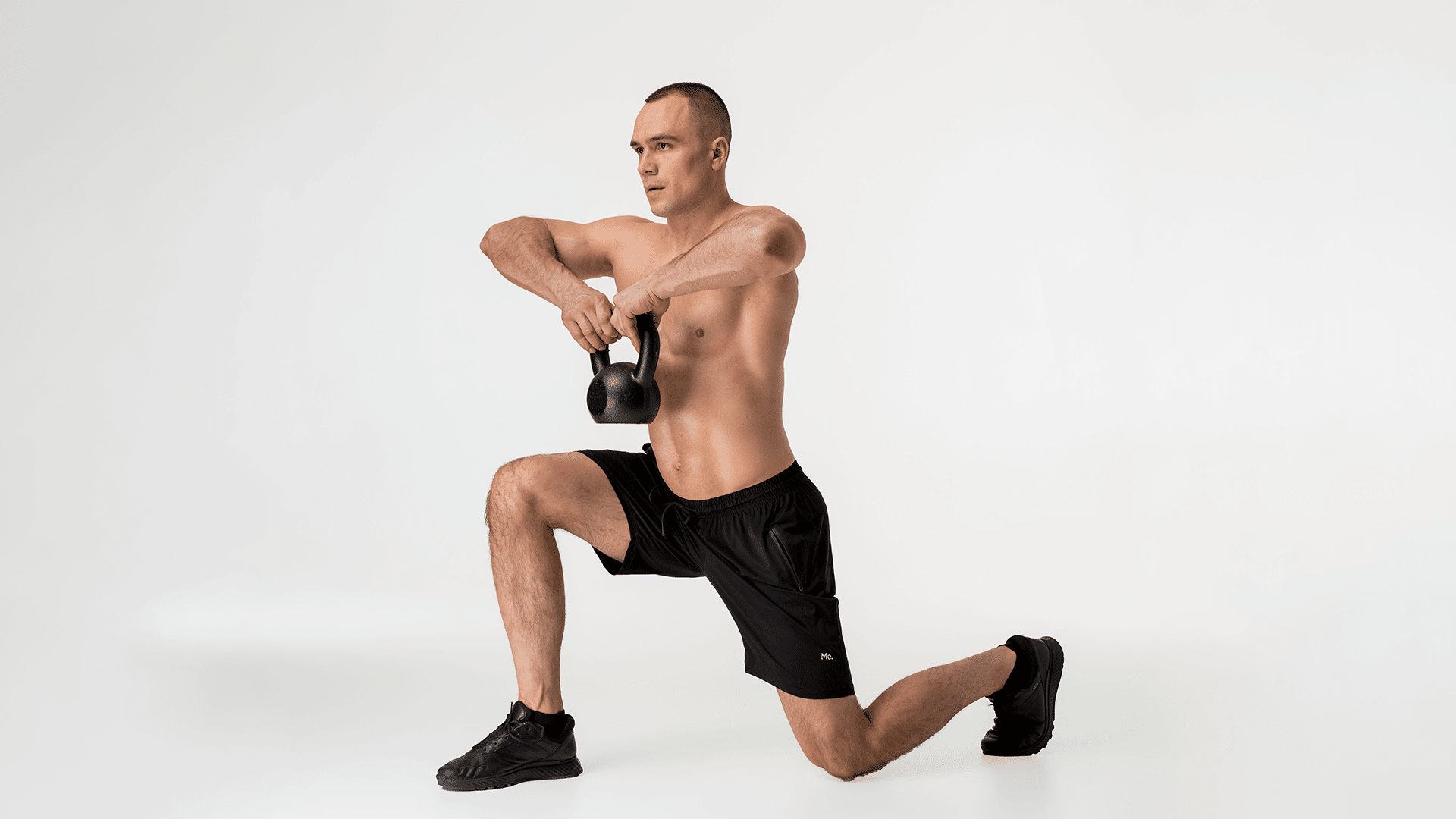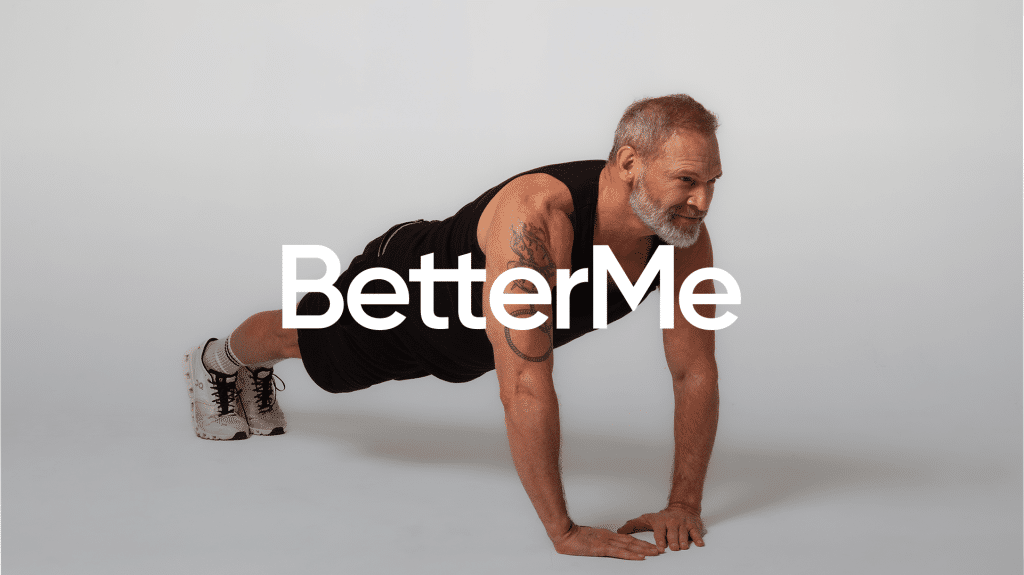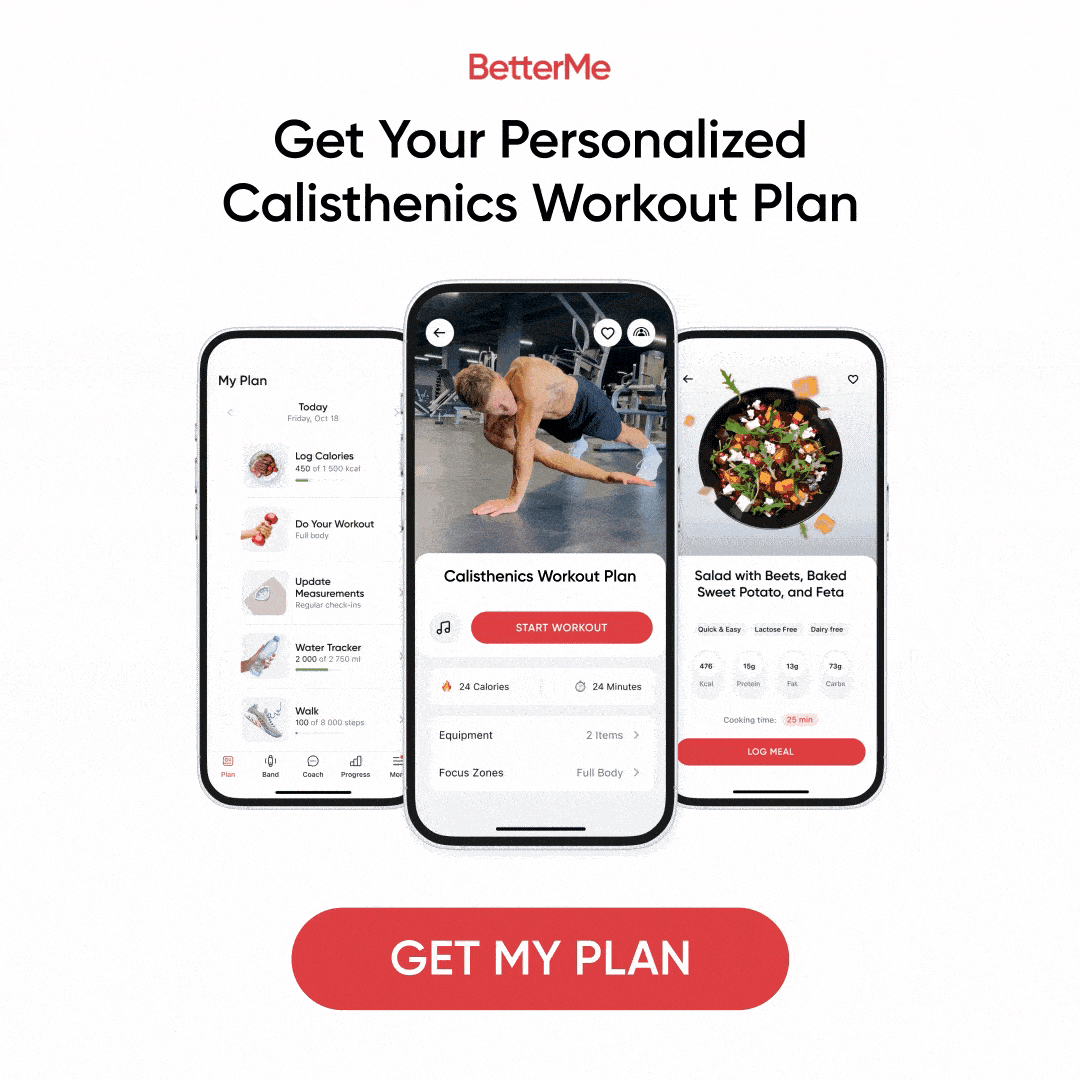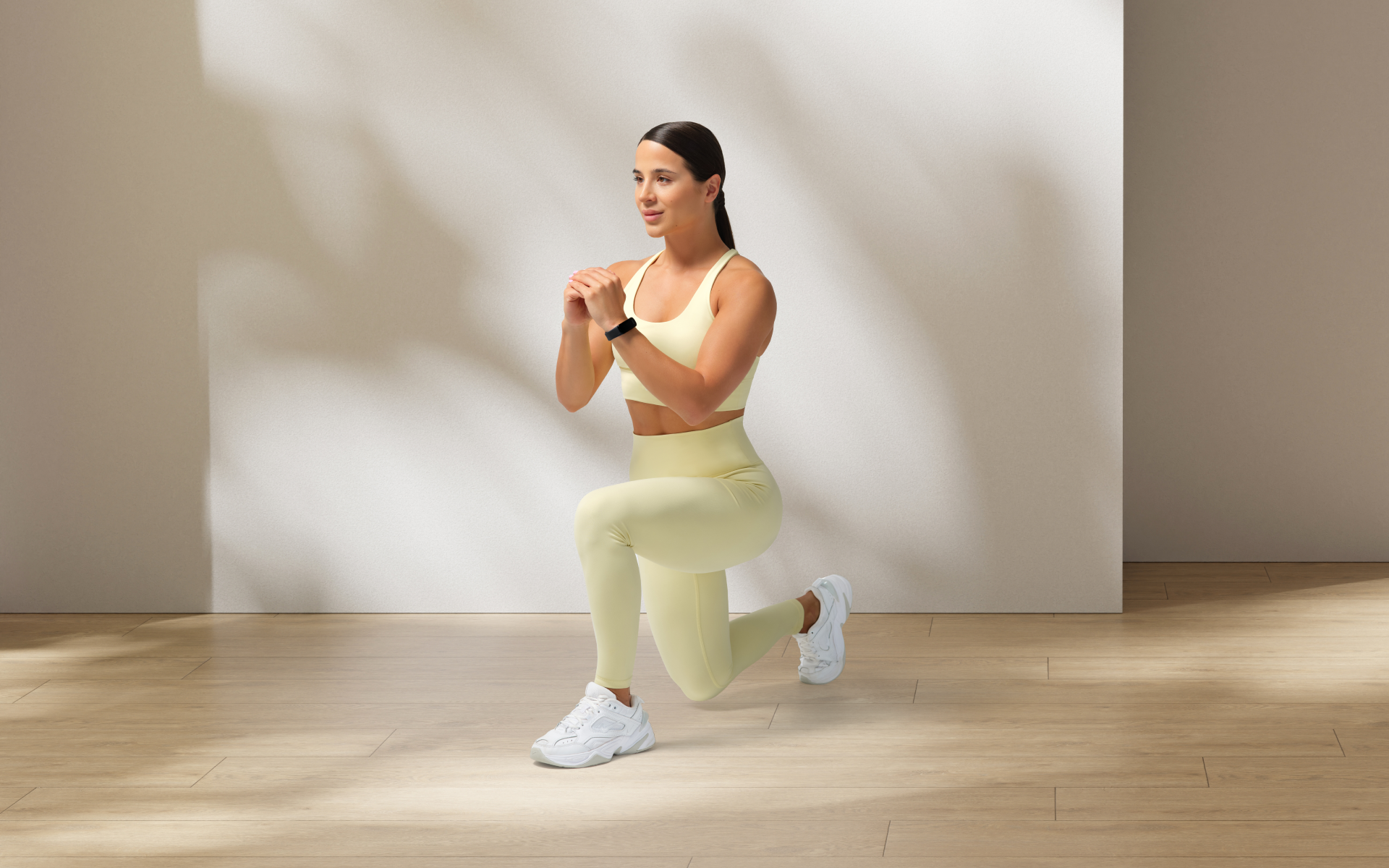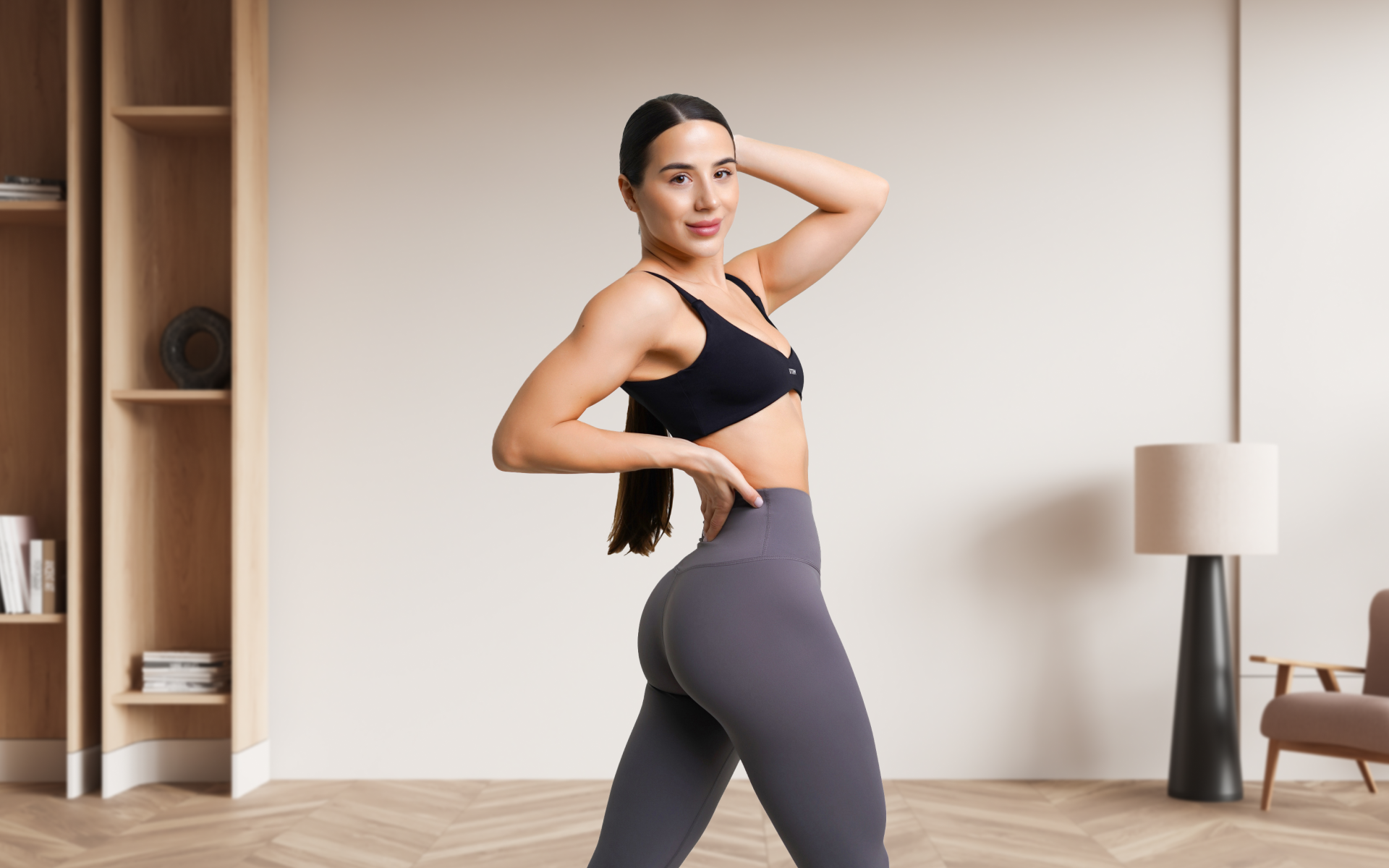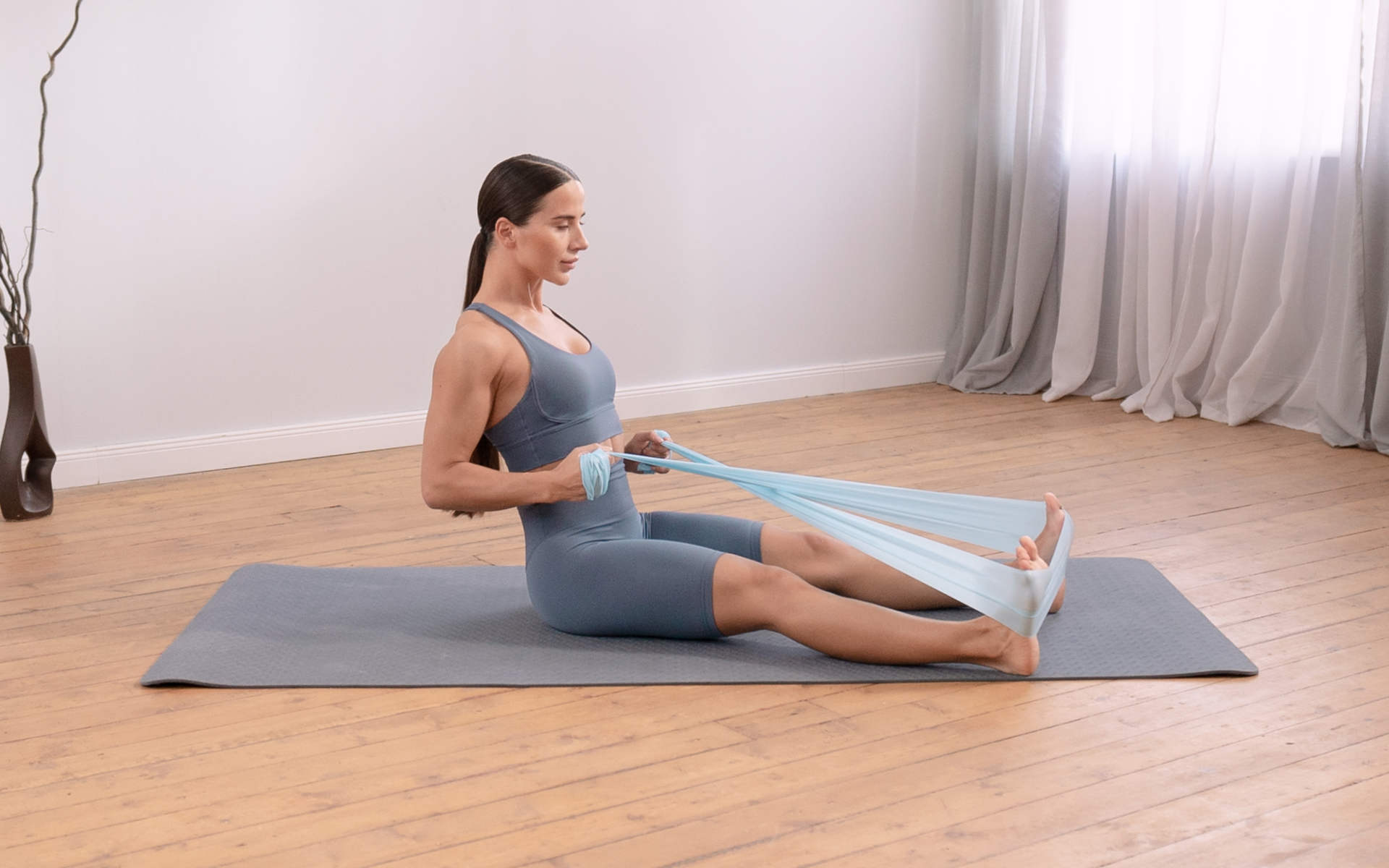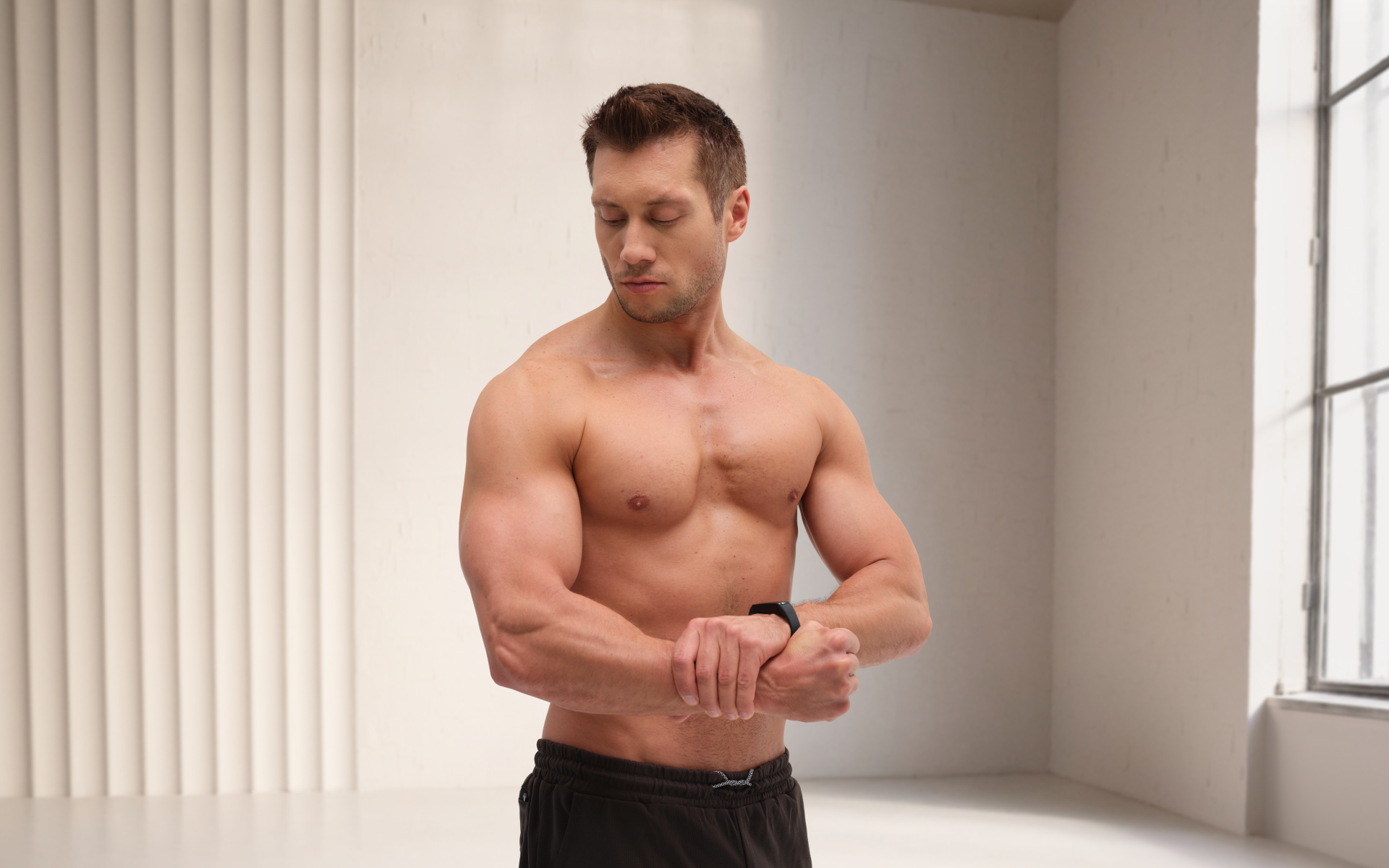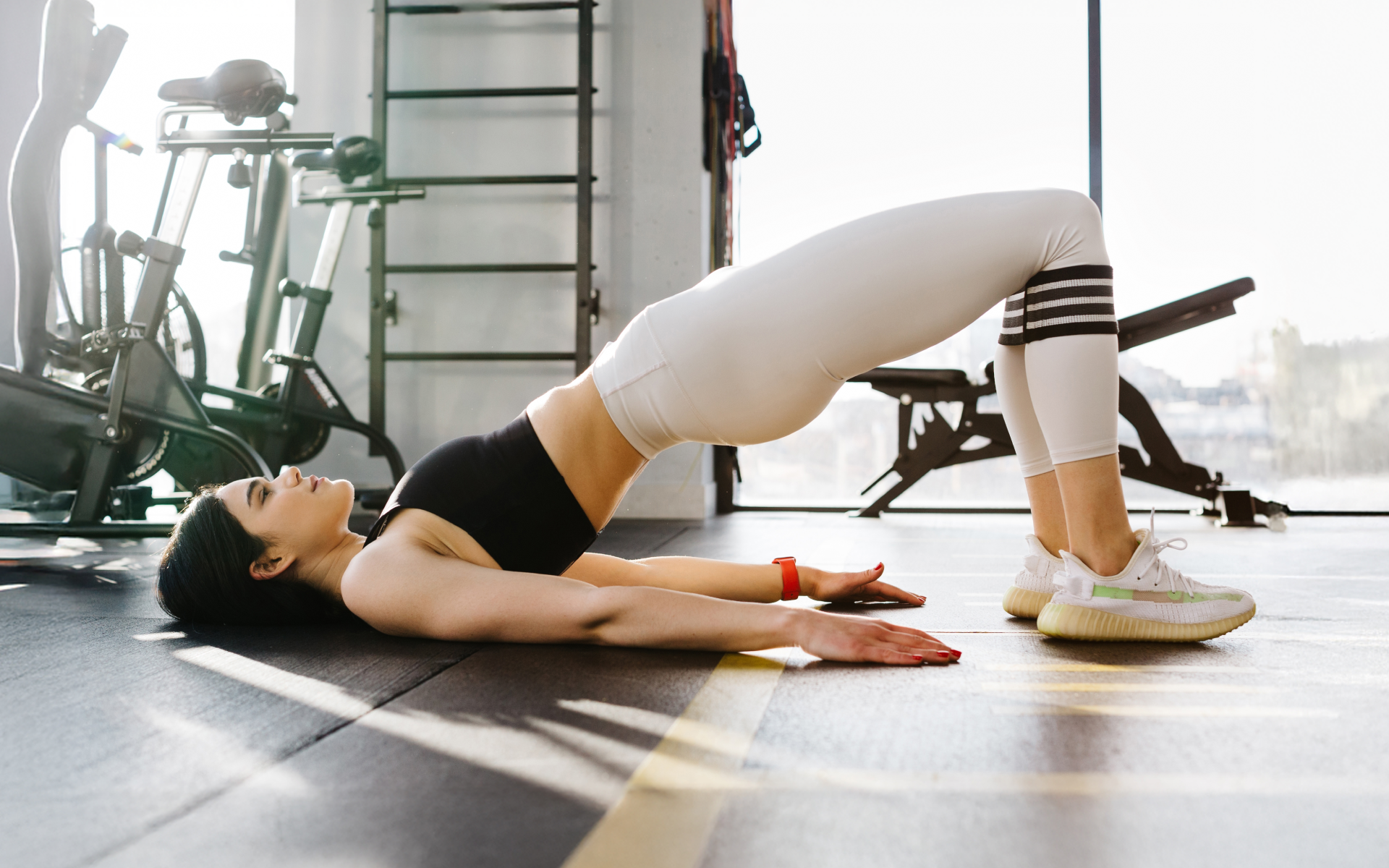If you’ve heard someone say that you should “never miss leg day”, you might have been wondering how you can effectively work out your lower body at home. After all, gyms boast fancy machines and weight sets that seem necessary for a robust lower-body workout.
But, guess what? You don’t need a gym membership or that much equipment to strengthen your legs and glutes. All you need is your body weight and some clear floor space. And, if you have them, throw in a resistance band and a yoga mat for extra challenge.
How Important Are Legs In Calisthenics?
Legs are incredibly important in calisthenics. This is because the majority of calisthenics requires a strong lower body to perform effectively.
Many calisthenics movements like squats, lunges, and jumps target the lower body directly. These exercises can not only strengthen your leg muscles but can also help improve your balance, coordination, and flexibility.
Even upper body-focused calisthenics exercises often engage the lower body. For instance, when performing push-ups or pull-ups, your legs and core provide the stability you need to maintain proper form.
Having strong legs can enhance your performance in more advanced calisthenics exercises. Moves like handstands and planches require significant leg strength for balance and control.
It’s worth highlighting that working out your legs can lead to overall muscle development and fat loss, as the leg muscles are some of the largest in the body and hence, burn more calories.
Dropping pounds by the dozens without putting yourself through the wringer is everyone’s weight loss pipe dream. But what if we told you that the BetterMe app can make that happen? Keep yourself in prime shape with our fat-blasting workouts, delicious budget-sparing recipes, and body-transforming challenges with our app!
Can I Build Legs With Calisthenics?
Even though calisthenics doesn’t involve the heavy weight lifting that’s often associated with muscle building, it offers a holistic approach to strength training that can build strong well-developed leg muscles.
Building muscles, particularly in the legs, involves stimulating muscle growth through resistance training. This process, known as hypertrophy, results in increased muscle size and strength. Essentially, you’re creating micro-tears in your muscle fibers during exercise, which then repair and grow stronger over time if adequate stimulis, rest and recovery are applied (4).
Now, let’s see how to workout legs at home.
Create Resistance With Your Weight
Calisthenics leg workout (no equipment) uses the weight of your own body as resistance (4). This type of workout can certainly help build leg muscles. The key is to focus on the exercises that require the most effort from your legs and to progressively increase the challenge these exercises present.
Build Functional Strength
Unlike some exercises that isolate specific muscles, calisthenics works multiple muscle groups at once often incorporating compound movements which can, leading to balanced muscle development (5) (2). By consistently performing lower body calisthenics for beginners, you’re looking at building strength that can be applied in your day-to-day activities and other physical pursuits.
Increase Muscle Endurance
Calisthenics legs exercises can also help build your muscle endurance. This is ideal for people who want to increase their stamina. Performing Movements such as squats, lunges, and wall sits for sets of 12-15 repetitions requires you to maintain work capacity in the targeted muscles, which can increase your muscular endurance over time (2).
Improve Body Control
Think of your legs as the foundation for your entire body. You may be more familiar with core exercises to improve posture, but improved leg strength can also help you stand tall and move with grace. This is because stronger lower body muscles provide greater balance and control in other movements (3).
Now, translate this improved body control to calisthenics, and you can start doing more advanced movements like levers and handstands with greater ease. Even the hardest calisthenics leg exercises may soon be achievable once you’ve mastered body control.
Work On Your Flexibility and Mobility
Lower body calisthenics at home exercises can help improve flexibility and mobility. These factors can be important aspects of muscle growth as they allow for a greater range of motion. Performing movements through a full l range of motion can lead to more effective muscle fiber activation, promoting beneficial effects on muscle growth (1).
Read more: 10 Calisthenics for Shoulders Exercises: Enhance Your Strength and Mobility.
How Do You Work Out Your Legs With Calisthenics?
These 8 lower body-focused calisthenics for beginners can be part of your at-home workout routine:
Squats
Probably one of the most common calisthenics exercises, squats are effective at strengthening the entire lower body – quads, hamstrings, calves, and glutes. At its basic level, a squat requires you to stand with feet shoulder -width apart and then lower your body down into a sitting position.
Start with the basic version of this exercise before progressing to more complex exercises like one-legged squats or pistol squats.
Follow these steps to perform the basic squat:
- Stand Straight: Start by standing upright with your feet slightly wider than shoulder-width apart. Your toes should be pointing slightly outwards.
- Position your Arms: Extend your arms out in front of you, parallel to the floor. This will help maintain balance throughout the exercise.
- Initiate the Squat: Begin the movement by hinging at your hips and pushing your buttocks back as if you’re about to sit on a chair.
- Lower Your Body: Continue lowering yourself, bending your knees while keeping your chest upright and your spine neutral. Ensure your knees track over your midfoot (in line with your second toe).
- Reach the Squat Position: Squat to a depth where your thighs are parallel to the floor or hips lower than your knees if mobility allows. Ideally, your knees should be aligned with your feet.
- Pause and Hold: Hold the squat position briefly, ensuring you’re engaging your core and your leg muscles.
- Return to the Starting Position: Push up through your heels, straightening your knees and hips to return to the standing position. Remember to keep your chest lifted and your spine neutral as you rise.
- Repeat: Aim for 6 to 8 repetitions to start, gradually increasing the volume as you gain strength and endurance.
Lunges
Like squats, lunges hit the major muscles of the lower body. You can try various types of lunges like reverse, stationary, forward, curtsy, and so on to target different muscle groups in your legs.
Follow these steps to perform the basic lunge:
- Start Position: Begin in a standing position with your feet shoulder-width apart. Start by taking a step in the direction of the variation you are completing (forward, reverse, etc.)
- Lower Your Body: Lower yourself by slowly bending both knees simultaneously. Your front knee should align with your ankle, your back knee should hover just above the ground.
- Maintain Upright Posture: Keep your chest lifted, core engaged and torso upright throughout this motion.
- Pause and Hold: Stay in this position for a few seconds to ensure you’re engaging your leg muscles.
- Return to Starting Position: Push up through the front heel as you straighten both legs and return to the starting position.
- Repeat: Alternate your legs and aim for 8 repetitions on each side to start, gradually increasing the volume as you get stronger.
Step-Ups
For this exercise, you’ll need a box, bench, or step. Step-ups work your glutes and quads like squats and lunges, but they can also help improve your balance and coordination.
Follow these steps to perform the basic step-up:
- Position Yourself: Stand a few feet away from the box, bench, or step and position your feet hip-width apart.
- Start Position: Step up onto the box with one foot, ensuring that your entire foot is placed securely on it.
- Step Up: Push through your entire foot to bring the other leg up onto the box while keeping your chest lifted and spine straight throughout this motion.
- Reach the Step-Up Position: Once both feet are firmly on the box, pause briefly for stability then slowly lower yourself back down by bending the front knee of your forward leg and bringing it back to the ground.
- Return to Starting Position: Step down with your opposite foot and return to the starting position.
- Repeat: Aim for 8 repetitions on each side, gradually increasing the volume as you get stronger.
Jump Squats
This exercise literally combines the benefits of both squats and jumps to give you a good lower-body workout. Just make sure you land softly on your feet to protect your joints from injury.
Follow these steps to perform the basic jump squat:
- Position Yourself: Stand with your feet shoulder -width apart, knees slightly bent, and your arms at your sides.
- Begin Jumping Squat: Start by pushing off the floor and jumping into the air. Keep your chest lifted and spine straight throughout this motion.
- Reach the Squat Position: When you land, bend your knees and lower your body until your thighs are parallel to the floor as far as you can confidently control and mobility allows.
- Pause and Hold: Hold this position for a few seconds before pushing off again to return to the starting position.
- Repeat: Aim for 8 repetitions of jump squats to start, gradually increasing the volume as you get stronger.
Glute Bridge
This exercise targets the glutes and hamstrings, helping to strengthen your hips and lower back. You can add more intensity by using a resistance band or weighted barbell.
Follow these steps to perform the basic glute bridge:
- Position Yourself: Lie on your back with your feet flat on the floor, hip-width apart, and knees bent.
- Initiate Bridge: Start by driving through your heels into the floor and engaging your core, raising your hips while keeping your shoulders and arms firmly planted onto the ground.
- Reach the Bridge Position: Lift your hips off the floor until your thighs and torso are in alignment, forming a straight line from your shoulders to your knees.
- Pause and Hold: Stay in this position for a few seconds while engaging your core and glutes.
- Return to Starting Position: Slowly lower yourself back to the starting position.
- Repeat: Aim for 8 repetitions to start, gradually increasing the volume as you get stronger.
Donkey Kicks
Donkey kicks target your glutes and are great for improving hip mobility. They can also help activate your core.
Follow these steps to perform donkey kicks
- Position Yourself: On a mat, start on all fours, making sure your hands are directly under your shoulders and your knees are under your hips. Keep your spine straight and your gaze downwards to maintain a neutral neck position.
- Lift and Extend: Your knee should be bent at a 90-degree angle, lift one leg off the ground and extend it upwards while keeping your foot flexed so it’s parallel to the ceiling.
- Reach the Donkey Kick Position: Continue lifting until your thigh is in line with your body and your glute is fully engaged. Ensure your hip and shoulder remain square to the ground and avoid arching your back.
- Pause and Hold: Hold this position for a brief moment at the top to fully engage your glutes.
- Return to Starting Position: Slowly lower your leg back down to the starting position, keeping your knee off the ground.
- Repeat: Repeat this for 8 repetitions then switch to the other leg. Aim to gradually increase the volume as you get stronger.
If you wish to free yourself from all the extra pounds that have been weighting you down for way too long, start using the BetterMe app and overhaul your entire life!
Can You Build Lower Body With Calisthenics?
Legs aren’t the only part of your lower body that can benefit from calisthenics. The right routine can help to build your entire lower body, including your glutes, hips, and calves, not just your thighs and hamstrings.
The multi-muscle engagement that’s typical of these exercises is particularly beneficial for the lower body as it helps ensure balanced development across all these areas.
For instance, exercises like squats and lunges don’t just target your quads and hamstrings; they also engage your glutes, which are crucial for many daily activities and sports. Similarly, calf raises, another common calisthenics exercise, can help strengthen your lower legs, improving your balance and agility.
In addition, calisthenics can also enhance your core strength. A strong core is integral to maintaining stability during these exercises and can contribute to a more toned and defined lower body (6).
So yes, calisthenics isn’t just about building leg muscles. It’s about strengthening and toning your entire lower body, leading to improved overall fitness, better performance in sports and daily activities, and a more balanced physique.
Read more: Calisthenics Warm Up 101: Bodyweight Exercises To Get Your Blood Flowing Before Your Workout.
The Bottom Line
Calisthenics is a great way to build and strengthen your lower body. Not only do calisthenic exercises target the major muscle groups in the legs, but they also engage smaller stabilizing muscles in your, hips, and ankles for balanced development across all areas. Plus, they can help improve core strength as well. The lower body calisthenics exercises we’ve discussed above are a great place to start.
DISCLAIMER:
This article is intended for general informational purposes only and does not serve to address individual circumstances. It is not a substitute for professional advice or help and should not be relied on for making any kind of decision-making. Any action taken as a direct or indirect result of the information in this article is entirely at your own risk and is your sole responsibility.
BetterMe, its content staff, and its medical advisors accept no responsibility for inaccuracies, errors, misstatements, inconsistencies, or omissions and specifically disclaim any liability, loss or risk, personal, professional or otherwise, which may be incurred as a consequence, directly or indirectly, of the use and/or application of any content.
You should always seek the advice of your physician or other qualified health provider with any questions you may have regarding a medical condition or your specific situation. Never disregard professional medical advice or delay seeking it because of BetterMe content. If you suspect or think you may have a medical emergency, call your doctor.
SOURCES:
- Effects of range of motion on muscle development during resistance training interventions: A systematic review (2020,nih.gov)
- Resistance training – health benefits (2022,betterhealth.vic.gov.au)
- Strong legs help power summer activities: Hiking, biking, swimming, and more (2022,harvard.edu)
- The mechanisms of muscle hypertrophy and their application to resistance training (2010,nih.gov)
- The advantages of body-weight exercise (2022,harvard.edu)
- The real-world benefits of strengthening your core (2012,harvard.edu)
